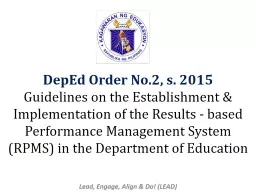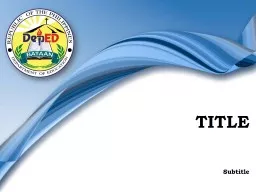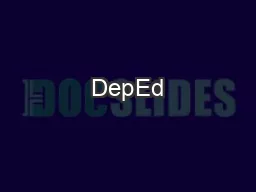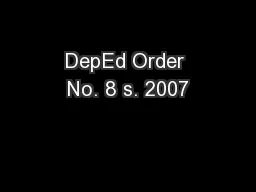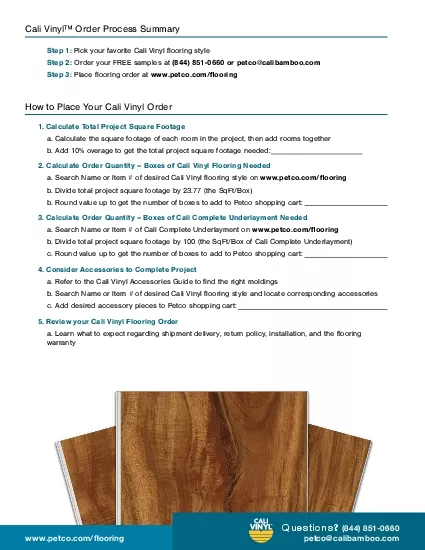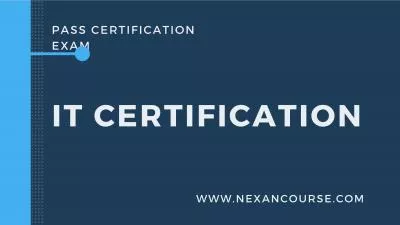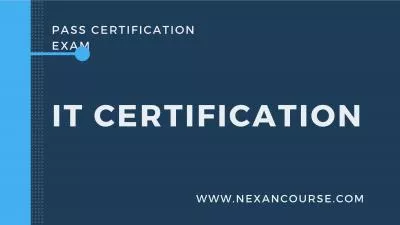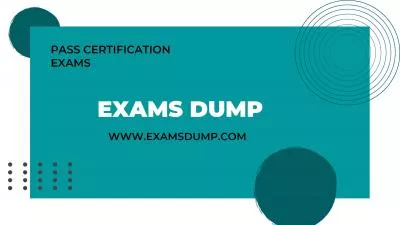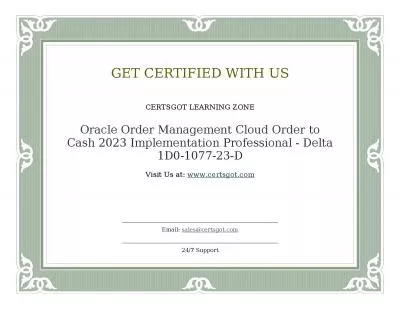PPT-DepEd Order No.2, s. 2015
Author : giovanna-bartolotta | Published Date : 2018-07-03
Guidelines on the Establishment amp Implementation of the Results based Performance Management System RPMS in the Department of Education Lead Engage Align amp
Presentation Embed Code
Download Presentation
Download Presentation The PPT/PDF document "DepEd Order No.2, s. 2015" is the property of its rightful owner. Permission is granted to download and print the materials on this website for personal, non-commercial use only, and to display it on your personal computer provided you do not modify the materials and that you retain all copyright notices contained in the materials. By downloading content from our website, you accept the terms of this agreement.
DepEd Order No.2, s. 2015: Transcript
Download Rules Of Document
"DepEd Order No.2, s. 2015"The content belongs to its owner. You may download and print it for personal use, without modification, and keep all copyright notices. By downloading, you agree to these terms.
Related Documents

